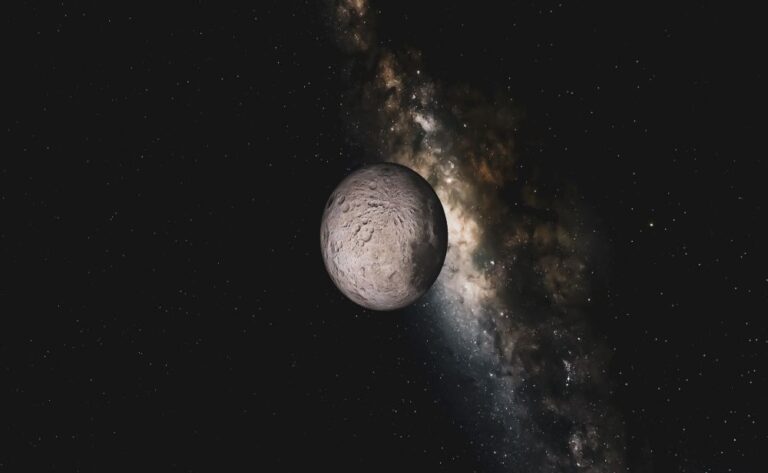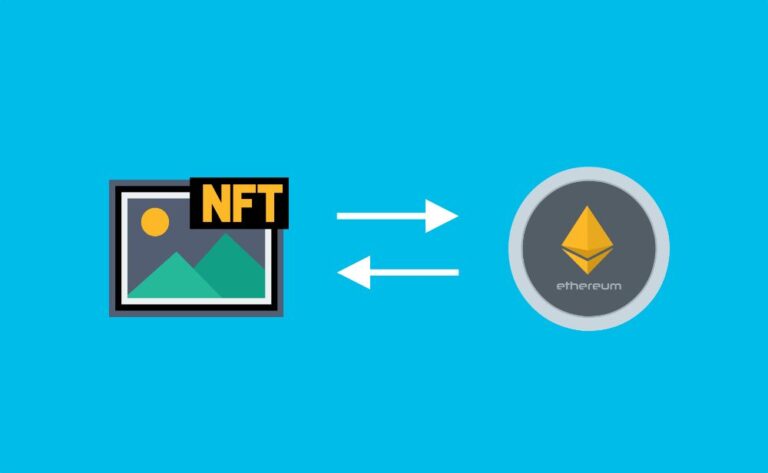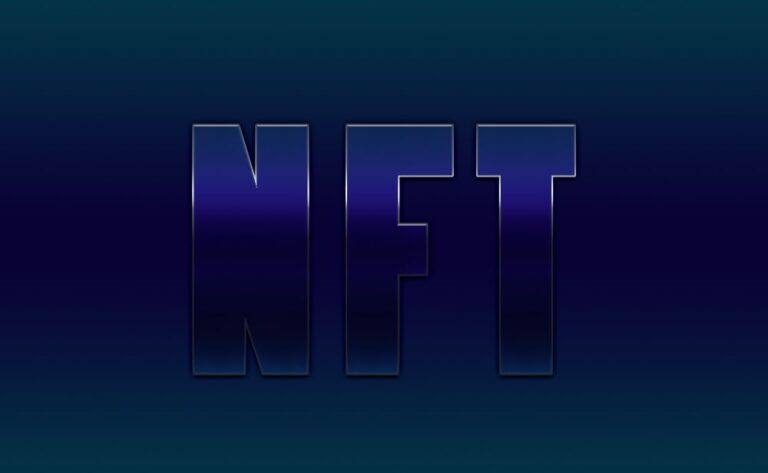
What exactly is NFT? A Comprehensive Guide to NFT There is a remote possibility that you are involved in the bitcoin industry and have not encountered NFT. NFT is new, trendy, and supported by major players such as Visa, but what is it? In this detailed tutorial, we’ll cover all you need to know.
What exactly is NFT? A Comprehensive Guide to NFT
There is a remote possibility that you are involved in the bitcoin industry and have not encountered NFT. NFT is new, trendy, and supported by major players such as Visa, but what is it?
This article covers all you need to know about NFT and how to acquire it. What if we told you that it is actually possible to generate money with NFT by making your own? Continue reading because you do not want to miss this opportunity.
What is the NFT acronym?
Non-fungible tokens, often known as NFT, are digital assets that exist in several forms. They share a common characteristic in that they are all stored on the blockchain.
You may have read that Grimes sold ten works of NFT art for a total of $6 million, but how does this occur? Do purchasers of NFT art receive actual objects and ownership rights? It depends.
NFT is predominantly digital, as is its proof of ownership, but the terms of ownership are programmable. As previously said, it comes in various forms and varieties. What does this entail?
These are some of the various NFT types:
• Music
• Animations
• Videos
• Pictures
• GIF
• Gameplay items
• Actual NFT
• Various sorts of tickets
•… Numerous other items
You can convert the majority of digital things to NFTs. Why would someone pay for something that is only available in digital format? Since it is non-fungible and unique, but there are also other factors, let’s examine how NFT operates.
How does NFT work?
First, let’s define the term “non-fungible” in its entirety. It may not be a phrase you use in everyday conversation, but fungible essentially means “replaceable with an identical thing.”
For instance, if you have a 10-dollar bill and your friend also has one, you may exchange them. Once the bill is exchanged, there will be no discernible difference, as it will retain the same value. Another example would be 1 Bitcoin, which can be exchanged for 1 Bitcoin without altering its worth.
However, NFTs are NOT fungible assets. There is only one identical copy, and it serves as a certificate of authenticity. That is why so many diverse artists create and sell their own digital art today.
If you compare the Mona Lisa to a non-fungible token, you will notice that the NFT has the advantage because it cannot be physically stolen because it is stored on the blockchain. The majority of them are on the Ethereum blockchain, although major corporations like IBM have invested in the use of NFTs on their own blockchain.
When someone possesses NFT, he essentially stores it in his digital wallet. These are specialized digital wallets that must be NFT-compatible; but, how does one get NFT? We will provide additional information later in the article, but for now, suffice it to state that there are marketplaces where you may get your own NFT.
If you are curious as to why someone would spend money on it, you could ask yourself the same thing about someone who purchases paintings in a gallery. The worth of art relies on how much the artist is willing to sell it for, and if someone is willing to pay that price, the sale is finalized.
If we take a painting as an example, there is no practical utility for it other than admiration. So why does it matter whether something is digital or physical? Since each NFT asset has a unique identity that can be used to establish the owner, you can be absolutely certain that digital objects are authentic.
As far as the copyright license is concerned, it depends on the artist’s decision. Personal, non-commercial, full-ownership, and even custom-programmable NFT licenses exist.
In fact, NFT is more than art. There are so many diverse use cases that it would take a considerable amount of time to cover them all. For the time being, let’s consider of it as a technique to acquire something unique; we’ll get into the specifics later in this book.
Compared to cryptocurrency
Many individuals believe that NFT is a brand-new cryptocurrency, but is this accurate? No, certainly not.
NFT and cryptocurrencies are both stored on the blockchain, which is the only similarity between them. Aside from that, they perform an entirely distinct function.
For example, the primary distinction highlighted at the beginning of this article is immediately apparent. NFT is a token that is non-fungible, whereas cryptocurrency is fungible.
You can swap Cryptocurrencies with other users or among your own wallets. There is nothing special about carrying one in your wallet, other than possibly being the first among your friends to do so.
Another important distinction is how cryptocurrencies and NFTs are sold. You can buy cryptocurrency on an exchange where you can deposit your fiat currency (USD, EUR, CAD, etc.) and receive bitcoin in exchange. If desired, you can then transfer the cryptocurrency to your digital wallet.
There is just one marketplace where fiat currency may be used to purchase NFTs; the majority exclusively take cryptocurrency. They are purchased on specialized markets where they are either auctioned off or sold immediately.
The sole resemblance between cryptocurrencies and NFT is that both can serve a variety of objectives. NFT serves multiple purposes. Whether it is a work of art, a cosmetic in-game item, or anything else, cryptocurrency has a role in the underlying technology.
Cardano (ADA) aspires to be a platform for decentralized application development (DApp), whereas Ripple (XRP) is utilized for payment settlement and asset trading. Clearly, they are both cryptocurrencies, but they do not serve the same objective.
Who may utilize NFT?
It is now time to describe who can utilize NFT and what they look like. As long as you have enough crypto in your digital wallet, anyone can acquire NFT.
As noted previously, there are a variety of use cases for NFT, and we will now discuss the most prevalent ones. It does not matter if you are an artist who wishes to sell his digital artwork online or a customer who wishes to acquire something unique.
1. Art
Currently, it is the most prevalent use case for NFT, and it takes various forms.
Unique photographs are one form of NFT art. For instance, the internet exploded when Jack Dorsey, the founder of Twitter, sold his first tweet as NFT art for $2.9 million USD. You can consider it an autograph, but there is only one autograph in existence, and you own it.
It serves no purpose other than being a collecting NFT item, but paintings in the actual world have no purpose either.
Animations are one type of NFT, and they can be accompanied by music, exactly like “Death of the Old,” which sold for roughly 389 thousand dollars.
Additionally, you can sell your music as an NFT. You may question why I would purchase such a product when I can simply download an.mp3 file. Yes, it is also possible to obtain a copy of the Mona Lisa, but is this the same thing? Artists can also attach royalties from their real-world music to an NFT, allowing the fan who owns it to profit as well.
2. Staking
Even if you are not an artist, you can still make money using NFT. This is made possible by the NFT staking idea. There are already a variety of stake concepts, but for this illustration, we will use the BAND Royalty model.
How does it work?
You must purchase a BAND Vinyl NFT and link it to your digital wallet.
2. Invest your NFT in one of the available three BAND Pools of Music Royalties
Earn money each time a song from the BAND’s music library is performed.
How then is this feasible? BAND owns the performance royalties of specific artists, and each time their songs are played on streaming sites, they earn money. Since you would own their NFT and have a stake in the pool, you would also receive a portion of this payout.
Please note that this is not a paid advertisement or financial advice; always conduct your own research and be aware that investing in such a thing involves certain dangers.
Consequently, staking is a phenomenal new form of investment that is taking NFTs and cryptocurrencies by storm.
3. Gaming
The gaming sector is one of the most straightforward applications for NFTs. Imagine possessing a one-of-a-kind object that you could show off to other gamers. Several games, such as Axie Infinity and CryptoKitties, utilize blockchain technology already.
Players can even profit from CryptoKitties. Each cat is one-of-a-kind (NFT) and cannot be taken or killed by anyone. As each CryptoKitty is unique, breeding them in-game will produce a unique kitten that you may then sell to other players.
Depending on their characteristics and rarity, some kittens cost more than others.
Even if triple-A games have not yet adopted NFT or crypto, smaller games have already begun utilizing the technology edge. But this is not the only application of NFT and blockchain in the gaming sector; there are numerous additional applications.
Due of the inability of users to “hack” data, blockchain may represent the future of gaming. Each item would have a blockchain address and owner, making it impossible to alter the game.
4. Verification
Nobody wants to spend their hard-earned money on a bogus item. Here is where an NFT can assist.
For instance, supposing you are purchasing a unique diamond chain and wish to determine its authenticity. The original owner could include an unforgeable authenticity certificate that is kept on the blockchain.
Recently, Nike received a patent titled “CryptoKicks.” When a buyer purchases a pair of shoes, he will receive both a cryptographic token and a digital shoe. This token is recorded on the blockchain, and if you wish to sell the physical shoes, you can also sell the corresponding digital shoes.
The entire NFT authentication procedure begins at the plant. Once the shoes are manufactured, a digital ID is recorded on the blockchain and provided to the purchaser alongside the shoes. As the value of limited pairs of shoes increases over time, this authentication will likely be utilized to identify counterfeit pairs.
5. Tangible assets
Despite the fact that this one is still under progress, it deserves to be mentioned. It is possible to convert physical objects into tokens. It makes no difference whether the document is a birth certificate or your medical history.
Eventually, it may be feasible to tokenize property ownership documents and sell them on the blockchain, which is intriguing. There are currently available for purchase virtual acreage and homes.
Currently, you may not be able to stroll around these virtual mansions and lands, but who knows when the NFT market begins to expand? Perhaps one day we will be able to navigate our virtual property using VR headsets.
Currently, the law does not permit the purchase or sale of real estate solely through the blockchain, so you may have to wait a bit before purchasing that Los Angeles home for a few BTC.
How to acquire NFT
If the notion of owning a unique digital asset appeals to you or if you wish to invest, NFTs are an excellent option. Perhaps you’ve witnessed others trading or investing in CryptoKittens and wish to give it a shot. Let’s examine the procedure for purchasing NFT.
Initially, you will require an Ethereum wallet. Why Ethereum instead of another cryptocurrency? Since the majority of NFTs are created on the ETH blockchain.
Users of Ethereum are able to design their own smart contracts. These contracts are essentially programs that execute on the Ethereum blockchain in accordance with the programmer’s instructions.
NFT also operates with a blockchain-based smart contract. The method by which an artist places their artwork on the blockchain as an NFT is known as “minting.” It will contain all information regarding ownership.
Now that the theory is out of the way, here are the steps for purchasing an NFT:
Create a wallet capable of storing an NFT.
There are already numerous wallets available for use. The majority of them can also store your cryptocurrency. These are the most prevalent digital wallets for NFT:
– Metamask is accessible as an iOS/Android app and a web extension (Chrome, Firefox, Brave, Edge). It is designed primarily for the Ethereum blockchain.
Enjin is exclusively accessible on mobile devices. It has teamed with Samsung to provide all mobile users with a secure blockchain solution.
– Math Wallet has successfully merged with the Ledger hardware wallet. It is available as a mobile app, browser extension, and web wallet. It supports over seventy prominent public chains, ranging from Bitcoin to KAVA.
– Trust Wallet has more than 10 million users and is expanding daily. Through their application, you can access NFT marketplaces with relative ease. You can save and manage your NFT, but it cannot be transferred. Multiple public chains, like Binance Smart Chain, Ethereum Classic, Calisto, etc., are accepted. It is only accessible on mobile devices.
– AlphaWallet is only available for mobile users (iOS/Android); nevertheless, its website offers numerous open-source tools for developers. The user interface is fairly intuitive for people who are new to the realm of NFT.
2.Invest in Cryptocurrency.
Since the majority of NFTs traded are on the ETH blockchain, you should acquire this cryptocurrency. You are free to choose where to purchase it, be it Binance, Coindesk, Crypto.com, or somewhere else.
Some wallets, such as Metamask, include an integrated fiat-to-cryptocurrency exchange.
Transfer the purchased ETH to your already created wallet. Now you have sufficient dollars to purchase NFT.
Select the exchange where you wish to purchase your preferred NFT.
There are numerous platforms on which individuals can sell their own NFT. You will choose one of these marketplaces based on the NFT artwork you wish to acquire. These are some of the most popular:
• OpenSea
• Mintable
• Rarible
In a moment, we will discuss each market in further depth. Remember that you’ll need to locate a marketplace where you can purchase your NFT. These marketplaces all list NFTs by category and allow you to filter them out.
Select the one you like best once you’ve identified it. The majority of markets will mention the price in both ETH and USD. TIP: Always add a bit more ETH to your account than the price of the NFT you wish to purchase, as there is a tiny transaction fee.
Fill in your information, click “Checkout,” and then confirm your agreement with the Ethereum gas fee.
Enjoy the NFT you just purchased.
After completing the payment process, you will be directed to a page that displays your transaction. You may also view it on Etherscan, which will display the payment’s progress.
It may take some time for the NFT payment to be processed, especially if the ETH network is extremely congested. Occasionally, even a couple of days are required for the payment to be confirmed, although this is uncommon.
Once the money clears, congratulations, you are now the owner of your first NFT. You may be allowed to display the NFT on your marketplace profile, depending on the marketplace where you purchased it. For instance, OpenSea will display all of your NFT items in the “My Collections” section of your profile.
What is the best marketplace for NFTs?
There are already over 50 marketplaces where you may purchase and trade NFT. To determine which marketplace you should utilize, whether to sell or purchase, there are a number of factors to consider.
How long has the marketplace existed? If this marketplace is brand new, you should investigate the company behind it to determine its reliability. You do not want to place your ETH in their wallet only to discover that it has been lost.
How many distinct artists are featured? What’s the use of joining a marketplace as both a buyer and a seller if nobody else is there? The greater the visibility, the better.
What types of NFTs exist? Depending on your needs, you should investigate the number of categories available on the market. It may be a digital image, animation, piece of music, in-game item, domain name, etc.
What are the costs? When you sell or buy something, do you have to pay a fee? If applicable, how much is the fee? Before entering the market, it is vital that you understand this.
Which blockchain does the marketplace operate on? The majority of NFT marketplaces operate on the ETH blockchain; nonetheless, gas transaction costs can occasionally result in exorbitant fees. In this instance, you should join a marketplace that utilizes a different blockchain.
If you are uncertain about which marketplace to select, we can assist you. Our staff is an expert in evaluating and ranking NFT products and services. Consult our list of the top NFT exchanges.
Conclusion
NFT may be a new phenomenon in the crypto community, but there are already millions of users and the number is growing. There are several artists and collectors on numerous online markets.
Whether you are an artist or a collector, you should try it out and see what all the hype is about. To purchase an NFT, you’ll need a digital wallet that supports NFT, sufficient cash, which will likely be in Ethereum, and you’ll have to choose a marketplace.
There are several applications for NFT, and this is only the beginning.





